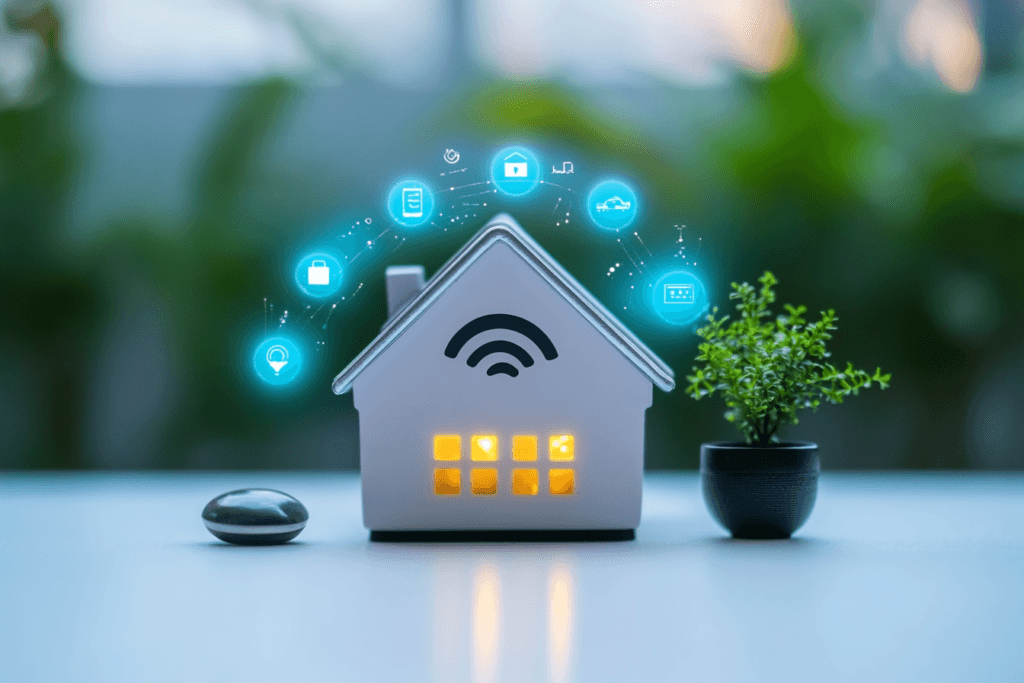The concept of a “smart home” has transitioned from science fiction to an attainable reality, enabling users to achieve unprecedented convenience, security, and efficiency in their households. As technology continues to advance, a plethora of devices are available to create an integrated ecosystem that caters to individual needs. In this post, we will delve into the various categories of smart home gadgets, explore ecosystem setups, discuss security and privacy considerations, and present user reviews to help you make informed choices.
Categories of Smart Home Gadgets
The smart home is not defined by a single device; rather, it comprises an array of interconnected products designed to enhance daily living. Let’s break down the core categories:
1. Smart Speakers
Smart speakers serve as the centerpiece of many smart home setups. These devices not only stream music but also act as personal assistants that can control other smart devices. Popular choices include:
- Amazon Echo: Equipped with Alexa, this device can control lights, play music, set reminders, and even order products online.
- Google Nest Audio: Integrated with Google Assistant, it can answer questions and manage tasks efficiently as well as work seamlessly within a Google-powered ecosystem.
- Apple HomePod: Designed for those deeply embedded in the Apple ecosystem, the HomePod syncs with Apple Music, controls HomeKit devices, and uses Siri for voice commands.
2. Smart Lighting
Smart lighting solutions are among the easiest and most satisfying upgrades. They offer customization and remote control through smartphone apps. Popular options include:
- Philips Hue: Known for its extensive range and color options, Philips Hue bulbs can be adjusted for brightness, set to a schedule, or grouped by room.
- LIFX: These Wi-Fi-enabled bulbs can produce millions of colors without requiring an additional hub, making them simple to set up.
- Wyze Bulbs: A budget option that doesn’t skimp on features; Wyze bulbs change colors and can be scheduled, offering great value for money.
3. Security Cameras and Smart Doorbells
Safety is a top priority for many homeowners, and smart security devices provide peace of mind.
- Ring Video Doorbell: This smart doorbell offers real-time video feeds and two-way audio, allowing users to communicate with visitors, no matter where they are.
- Arlo Pro 4: A versatile security camera that can function both indoors and outdoors, offering 4K video quality and an array of smart features.
- Nest Cam: Ideal for those within the Google ecosystem, this camera provides intelligent alerts based on motion and facial recognition.
4. Smart Thermostats
Smart thermostats enhance energy efficiency by learning your patterns, leading to optimal heating and cooling schedules. Leading models include:
- Nest Learning Thermostat: This clever device adjusts your home’s temperature automatically based on the time of day and your preferences.
- ecobee SmartThermostat: It comes with remote sensors and is compatible with voice assistants, expanding control throughout the home.
- Honeywell Home T9: A straightforward option that focuses on temperature control and compatibility with existing HVAC systems.
5. Smart Locks
Smart locks represent multifaceted security solutions, enabling keyless entry and allowing remote access. Popular selections include:
- August Smart Lock: This lock retrofits onto your existing deadbolts and includes a feature allowing guests to access your home temporarily without needing physical keys.
- Yale Assure Lock SL: A sleek touchscreen lock that can be controlled through an app or integrated with home assistants.
- Level Lock: Blending seamlessly with traditional deadbolt designs, it operates without requiring any additional keys, maintaining aesthetic appeal.
6. Smart Plugs and Hubs
Smart plugs act as the basic building blocks of a smart home, allowing you to control conventional devices:
- TP-Link Kasa Smart Plug: Easily integrates with both Alexa and Google Assistant, offering reliable remote access and scheduling features.
- Wemo Mini Smart Plug: Known for its compact size and user-friendly controls, it doesn’t block adjacent outlets, making it a convenient choice.
A smart hub, like the SmartThings Hub, allows control of various devices across multiple brands, streamlining your smart home experience.
7. Smart Appliances
From refrigerators that can tell you when you’re low on groceries to smart ovens that can be controlled via smartphone apps, smart appliances are gaining traction in modern homes.
- Samsung Family Hub Refrigerator: This innovative refrigerator features a touchscreen interface, inventory management features, and can even work with your smart home devices.
- LG Smart Oven: Users can control their oven with voice commands and receive notifications when meals are ready through smartphone connectivity.

Setting Up a Smart Home Ecosystem
Creating a smart home ecosystem requires considering compatibility among devices and selecting a central hub. The three major ecosystems to explore include Google Home, Amazon Alexa, and Apple HomeKit.
Google Home
Google Home’s ecosystem is user-friendly and integrates seamlessly with various smart devices. Setting it up involves:
- Connecting your devices to the Google Home app.
- Using voice commands with Google Assistant to control supported devices.
- Leveraging routines to automate tasks, such as turning off lights and locking doors at bedtime.
Amazon Alexa
The Alexa ecosystem offers vast compatibility with devices across multiple brands. Follow these steps to create your setup:
- Download the Amazon Alexa app and log in.
- Discover and add compatible devices through the app or by voice command.
- Utilize Alexa skills to extend functionality, tailoring automation routines to your needs.
Apple HomeKit
HomeKit is perfect for Apple users wanting cohesive control over their devices. The setup process includes:
- Using the Home app on iPhone or iPad to add compatible devices.
- Grouping devices by rooms or functions for easy management.
- Using Siri to voice-control your devices or set automations.
Smart Home Assistant Comparison Table (2025)
| Feature | Google Home (Nest) | Amazon Alexa (Echo) | Apple HomeKit (Siri) |
|---|---|---|---|
| Voice Assistant | Google Assistant | Alexa | Siri |
| Smart Speaker Devices | Nest Mini, Nest Audio, Nest Hub | Echo Dot, Echo, Echo Show | HomePod Mini, HomePod |
| Smart Display Options | Nest Hub, Nest Hub Max | Echo Show Series | No dedicated display (uses iPhone/iPad) |
| Ecosystem Compatibility | Works with Android, iOS, Google Nest devices | Works with Amazon devices, Android, iOS | Works with iPhone, iPad, Mac, Apple TV |
| Third-Party Smart Home Support | Google Home-compatible devices, Matter | Extensive third-party integration, Zigbee support | Works with HomeKit-certified devices, Matter |
| Voice Recognition | Multi-user voice detection | Multi-user support | Multi-user support (HomePod) |
| Smart Home Automation | Google Routines via Google Home app | Alexa Routines via Alexa app | HomeKit Automations via Apple Home app |
| Streaming Services | YouTube Music, Spotify, Apple Music, Deezer | Amazon Music, Spotify, Apple Music, Pandora | Apple Music, limited Spotify support |
| Privacy & Security | Google Account-based, voice history deletable | Amazon Account-based, voice history deletable | End-to-end encryption, strong privacy features |
| Smart Home Protocols | Matter, Thread, limited Zigbee | Matter, Zigbee (on some Echo devices) | Matter, Thread, HomeKit Secure Video |
| Best For | Google ecosystem users, Android users | Amazon shoppers, budget-conscious buyers | Apple users who prioritize security & seamless iOS integration |
| Price Range | $49 – $229 | $39 – $249 | $99 – $299 |
Security and Privacy Considerations
While the convenience offered by smart home devices is appealing, it’s essential to consider the associated security and privacy implications. Here are some key points to ponder:
- Data Privacy: Smart home devices often collect personal data, such as your routines and location. Understand how companies store and utilize this data.
- Device Security: Many devices are susceptible to hacking if proper security measures aren’t taken. Regularly update device firmware and change default passwords to something more secure.
- Network Security: Implement security measures for your home Wi-Fi network, such as strong passwords and guest networks for visitors.
- End-to-End Encryption: Look for devices that offer encryption for all data transferred, ensuring that your information remains private.
User Reviews and First-Hand Experiences
To provide a comprehensive view of smart home gadgets, let’s delve into some user experiences. Here’s what people are saying about their favorite devices:
Amazon Echo
“I love my Amazon Echo! The voice recognition is fantastic, and it automates so many tasks around the house. From turning on lights to shopping with simple commands, I can’t imagine going back.”
Philips Hue
“The Philips Hue lights have completely transformed my living space. The variety of colors and the ability to set schedules is something my family uses daily. Highly recommend if you love ambiance.”
Ring Video Doorbell
“The Ring Doorbell has been a game-changer for keeping an eye on deliveries and visitors. The video quality is impressive, and I appreciate the notifications that let me know when someone is at my door.”
Nest Learning Thermostat
“Since installing the Nest, my energy bills have dropped significantly. It learns my habits and adjusts accordingly, which is both efficient and convenient. Absolutely worth the investment.”
Conclusion
The smart home revolution has arrived, and the array of gadgets available today enables customizable living that enhances comfort, security, and efficiency. Whether you are interested in sound systems, security cameras, or ambient lighting, there’s something for everyone.
As you embark on your journey to create a smart home, it’s critical to choose a compatible ecosystem and remain informed about your devices’ privacy and security. By reading user reviews and conducting thorough research, you can confidently build a smart home that caters to your preferences while ensuring peace of mind.
Looking forward to seeing what innovative devices will populate the market next, I believe the future of smart living is not just smart—it’s intelligent and responsive to the needs of all users.
For more information on setting up a smart home or individual devices, feel free to reach out at [item]. Happy smart living!
Like this article and would love to read more? See these:



